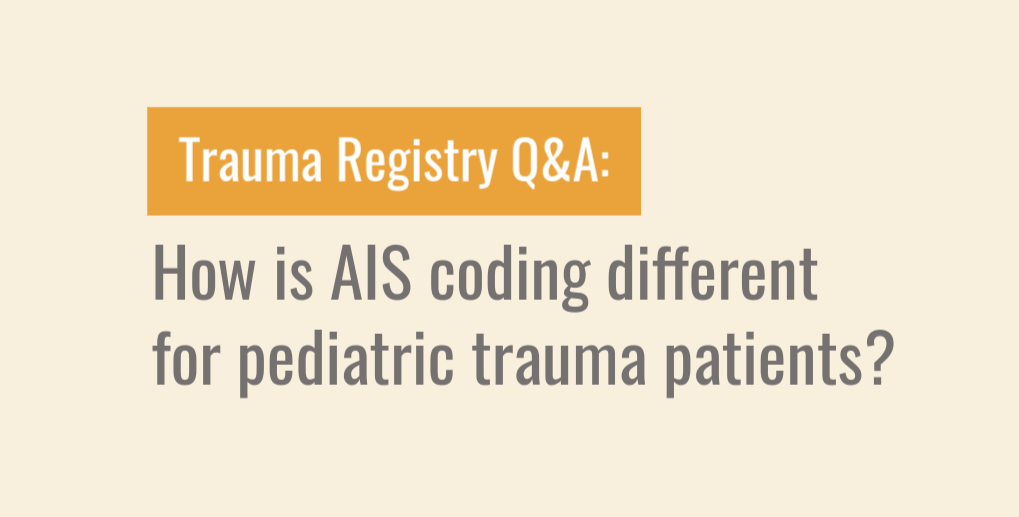In the last Trauma Registry Q&A column, we explained the difference between the Injury Severity Score (ISS), the New Injury Severity Score (NISS) and the Trauma Injury Severity Score (TRISS). These scores have been validated for adult injury patients, but can they also be used for pediatric trauma patients?
The short answer is yes. All three of these trauma scores are built on the Abbreviated Injury Scale (AIS), and AIS coding is applicable to both adult and pediatric patients.
However, trauma registrars should be aware of key ways in which AIS coding accounts for younger trauma patients. Specifically, the AIS Dictionary contains special pediatric modifiers for various head bleeds and for burns.
Q. How do you code head bleeds for pediatric patients?
The “Head” chapter of the AIS Dictionary contains special pediatric modifiers for subgaleal hematomas (under Scalp) and for bleeds and contusions of the cerebrum and cerebellum. When coding these injuries in pediatric patients, note that there are modifiers for > 6 months old and ≤ 6 months old.
Blood loss can be an indicator of injury severity, and a 20% blood loss by volume is used in AIS coding to distinguish level of severity. When assessing blood loss in a pediatric patient, the following chart (found in the front of the AIS Dictionary) may be helpful.
| Weight (lbs.) | Weight (kg.) | 20% blood loss (cc) |
| 220 | 100 | 1500 |
| 165 | 75 | 1125 |
| 110 | 50 | 750 |
| 55 | 25 | 375 |
| 22 | 10 | 150 |
| 11 | 5 | 75 |
When measuring bleed size, remember to include the perilesional edema. This can make a significant difference in AIS severity.
Q. How do you code burns for pediatric patients?
The “External” chapter of the AIS Dictionary contains special pediatric modifiers for burns. The code for first degree burns includes a modifier for ≤ 1 year old. The codes for second and third degree burns include modifiers for < 5 years old.
Remember that AIS burn descriptors are intended to serve as gross estimates of severity. They are not a substitute for the use of a comprehensive burn scale.
Q. I have an idea for improving AIS coding for pediatric patients. Can I submit a suggestion?
Yes. The AIS Content Subcommittee of the Association for the Advancement of Automotive Medicine periodically reviews AIS codes in the light of discussions regarding the pediatric trauma patient. If you have a suggestion for the committee, please send it to info@aaam.org.
Amy Brammer, MSN, RN, TCRN, TNS, CEN, CAISS, CSTR
Trauma Program Director, Kaiser Permanente Vacaville Medical Center
Vice Chair of the Abbreviated Injury Scale Certification Board
Faculty for the Abbreviated Injury Scaling Course
Jessica Pemberton, MSN, RN, CEN, TCRN, CAISS, CSTR
Trauma Performance Improvement Coordinator
Kaiser Permanente Vacaville Medical Center
Kathy Cookman, BS, CSTR, CAISS, EMT-P, FMNP
AIS Business Director/International Technical Coordinator – AAAM
CEO – KJ Trauma Consulting, LLC

